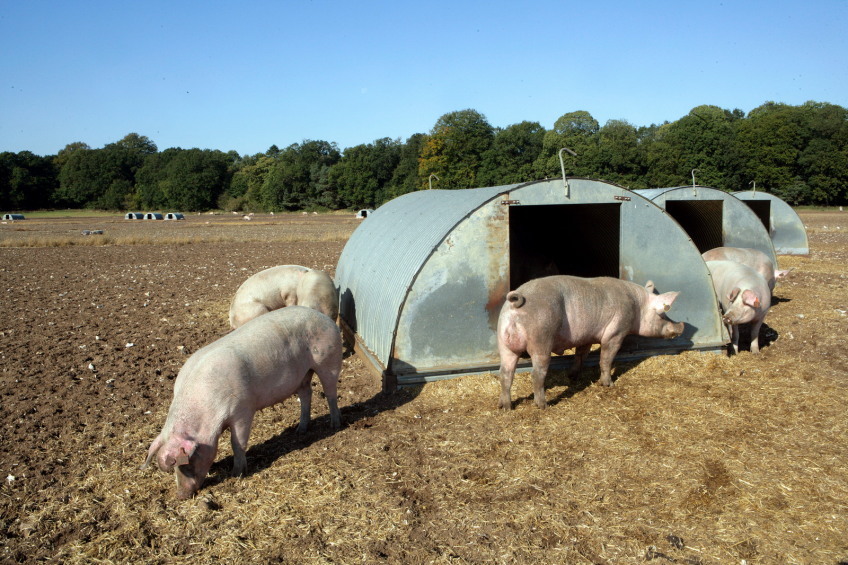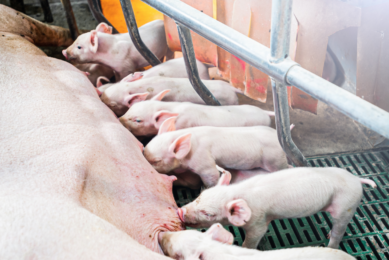British pig industry fears exodus

The British pig sector fears an exodus. Pig prices are at an 8-year low but in real terms they are at the lowest since 2000, levy board AHDB Pork says.
The industry is seeking special support from independent butchers, supermarkets and shoppers over the coming months, to help it survive the worst period of low prices for over half a decade.
Since late 2013, the average pig price in the United Kingdom has fallen steadily, with pigs losing a third of their value in that time. Price falls have accelerated in the first weeks of 2016, losing £0.13/kg (€0.16/kg), which equals around £11 (€14) per head. As a result, many pig producers are now losing money and there is an increasing risk some will decide to leave the industry, affecting the level of UK pork available to the market, the Agriculture & Horticulture Development Board (AHDB) Pork says.
More pig meat on the market
Stephen Howarth, AHDB Pork market specialist manager, commented: “Our report has been produced against a backdrop where production continues to rise as efficiency and productivity improve and record weights are being seen. This all leads to more pig meat on the market.”
He continued, “At the same time, demand for pork has dropped, even though the price is falling. UK pork is having to battle hard against cheaper EU imports, exacerbated by the weakness of the euro against sterling and a supply glut on the continent due to increased production and closure of trading routes to major export partners.”
Retail prices decreasing
On top of this, retail purchases of pork have been decreasing, despite falling prices. Consumers are increasingly switching to more convenience based foods, where pork does not feature strongly, as well as to chicken, and the image of fresh pork is becoming dated and jaded, according to the levy board.
Along with higher production, this has contributed to the downward pressures on pig prices. Pig prices are now at a level which is lower than average producer cash costs, so we are likely to start to see producers leaving the market and breeding herds becoming rationalised, AHDB Pork fears.
This activity has already been seen in some EU member states. Recent figures from the Department for the Environment, Food and Rural Affairs show the number of gilts in-pig was down 8.5% at December 2015, compared to December 2014. Over the same period, the total number of pigs in England decreased 3.6%, to 3.5 million. The finisher herd fell 4.3% while the female breeding herd was up 1.1%.
Significant contributions to rural economy
Therefore, 7 organisations in the British pig industry have joined forces to explain to every other player in the pig and pork supply chain why the industry is worth helping. In a joint statement, AHDB Pork, Assured Food Standards, British Pig Association, National Farmers Union of Scotland, National Pig Association, Pig Veterinary Society and Quality Meat Scotland cite the significant contribution British pig farmers make to the rural economy, also their higher animal welfare standards.
“Even though this country is only 40% self-sufficient in pork, our farmers are losing up to £10 (€13, ed.) on every pig they sell, as a result of European Union over-supply. Without the support of the rest of the food-chain, serious contraction in the national pig herd is inevitable. This will mean even more imports of lower-welfare pork in future,” the statement read. Some players in the British industry, including Tulip UK, have already signalled their intention to scale back or quit.
The text continued, “To prevent a much larger exodus before the European Union market starts to rebalance towards the end of this year, we are calling on all players who rely on a thriving domestic pig sector to take a number of actions.”
These include for processors not to exploit the current period of over-supply to increase their margins. “You’re already in profit, your suppliers aren’t.”
Selling and buying British pork
Independent butchers have been asked to sell British pork and if they must sell cheap imported product to be honest and label it prominently as such. The food service should serve British pork and also signal that they are doing so on their tables and menus.
“Retailers, if you already source 100% British fresh pork, thank you. If you don’t, make a commitment immediately to source at least another 5% British.”
And finally the consumers are told that pork is particularly good value at present as pig farmers are being paid at 2007 levels for their pigs. “Please always make a point of checking the pork, bacon, ham and sausages you buy are British.”










